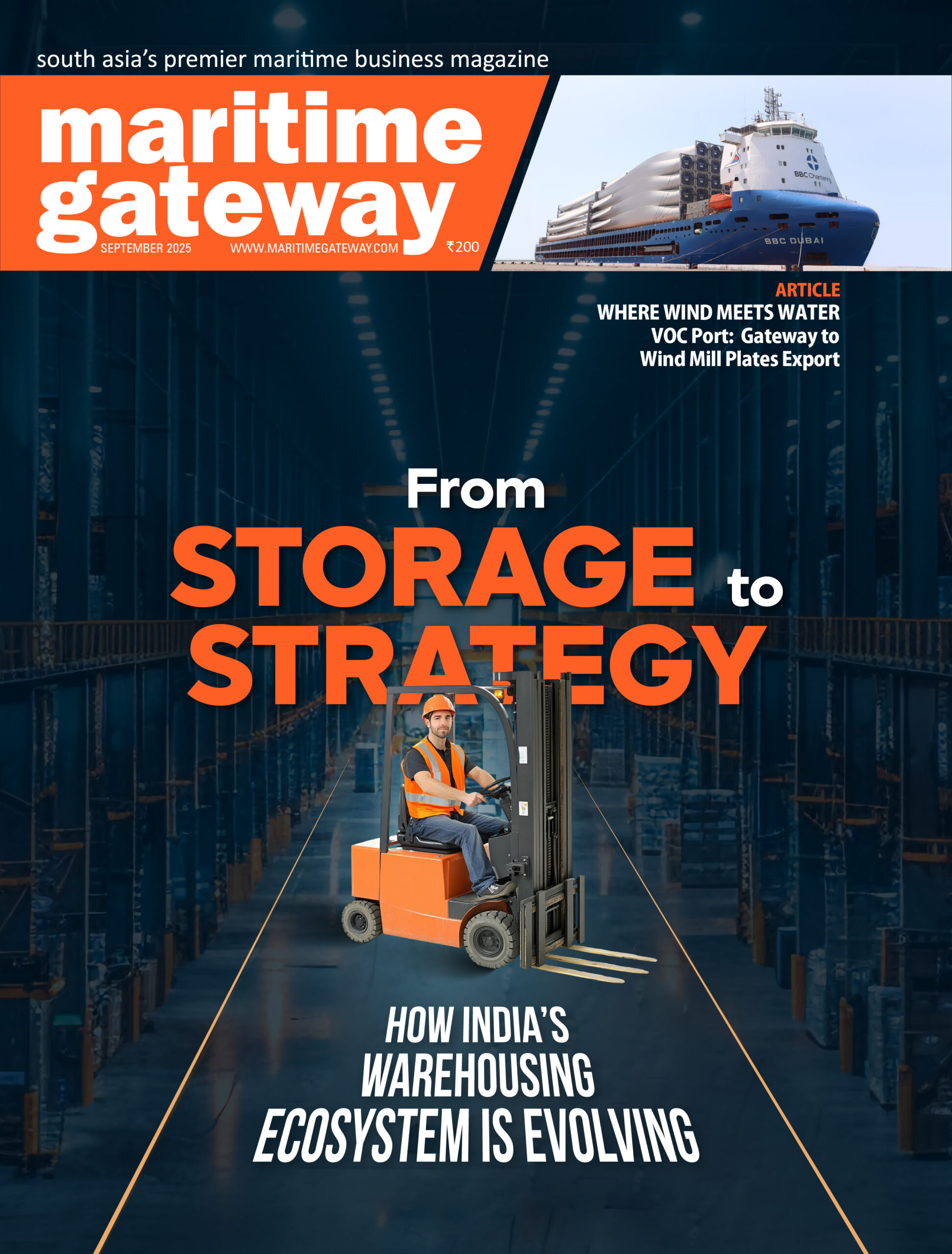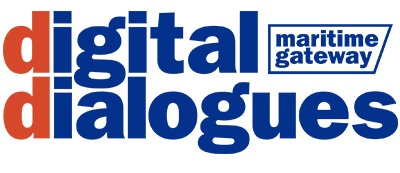VOC Port’s container turnaround time outperforms ports in the USA and Australia. What are the key factors behind this efficiency?
VOC Port has optimised terminal operations through smart port initiatives, process automation, and strong coordination with operators like DBGT and TICT. Unlike congested gateways such as Los Angeles and Sydney, Tuticorin offers quicker vessel turnaround. The Direct Port Entry (DPE) system allows factory-stuffed, e-sealed export containers to bypass Container Freight Stations (CFSs) and Inland Container Depots (ICDs), enhancing efficiency. Over 16 CFSs within a 10-km radius further support operational fluidity.
How is the port preparing for rising cargo volumes?
With capacity expansions and digitalization, VOC Port is scaling up to handle larger vessels and higher cargo volumes without raising costs. Infrastructure upgrades, including berth expansions and deeper draft capabilities, ensure efficiency.
How are partnerships with private operators like JM Baxi and JSW improving the port’s capabilities?
Private participation through TICT (JM Baxi), DBGT, and JSW has significantly enhanced efficiency. DBGT and TICT maintain global benchmarks, consistently achieving over 30 moves per hour. JSW’s bulk terminal is set for full mechanization by March 2027. The widening of the entrance channel to 230m will accommodate larger vessels, boosting industrial investments, including Vinfast’s EV unit, Tata Power’s solar module plant, and a proposed shipbuilding facility.
Are there logistics parks in the pipeline to support MSMEs and reduce costs?
VOC Port has launched Tuticorin SPEEDZ under the Sagarmala Coastal Employment Zone, allocating 600 acres to promote port-based industries. This initiative supports MSMEs, encourages export-oriented manufacturing, and lowers logistics costs through proximity-based integration.
How much of EXIM cargo now bypasses Colombo, and what sectors are driving this shift?
VOC Port handled over 795,000 TEUs in FY 2024–25, reflecting 7.52 per cent growth. While precise figures on Colombo bypass aren’t disclosed, better connectivity, direct shipping services, and infrastructure improvements are reducing dependency. Key drivers include textiles, electronics, solar energy equipment, and consumer goods, leading to forex savings and shorter lead times for Indian exporters.
What role does Gangaikondan SEZ play in boosting container volumes?
The SEZ is witnessing growth in solar panel manufacturing and electronics, with companies like Tata Solar and Vikram Solar boosting exports. DBGT and TICT, equipped with a 14.2m draft and 370m quay length, can handle vessels up to 8,000 TEUs, ensuring efficient logistics for SEZ units.
What infrastructure projects are strengthening hinterland connectivity?
VOC Port is well-linked via NH 38 and NH 138, with six-laning work reducing congestion and transit time. The upcoming Madurai–Thoothukudi rail line will enhance cargo evacuation efficiency and open new logistics corridors. NHAI and Indian Railways partnerships aim to lower per-TEU transport costs.
How is VOC Port leveraging its East–West maritime positioning?
The port is engaging global carriers to establish direct call routes, reducing reliance on Colombo. Competitive tariffs, berth expansions, dredging, and cargo handling investments enhance VOC Port’s attractiveness.
How is VOC Port diversifying beyond coal and containers?
The port is transforming into a green energy logistics hub, with investments including:
- ACME Green Hydrogen: Rs 27,000 crore project spanning 222 acres.
- Sembcorp (Green Infra): Rs 8,460 crore investment over 149 acres.
- Amplus Ganges Solar & Renew E-fuels: Developing green ammonia storage and production, expected to launch by 2028.
What threats does VOC Port face, and how is it preparing?
VOC Port is addressing this by developing an Outer Harbour with two container terminals (4 million TEU capacity), deepening dredging to 16m, and investing in smart logistics. By focusing on green fuel logistics, hinterland links, and policy-driven incentives, VOC Port aims to expand its market share and retain its competitive edge.
VOC Port has been hub for export of windmill blades; can you please throw some light on that?
VO Chidambaranar Port has been an icon of India in the windmill blade exports. The Port has handled 2635 number of blades in 96 windmill blade vessels in the year 2024-25, when compared to 2030 number of blades in 72 windmill blade vessels in the year 2023-24, witnessing an impressive growth of 30 per cent.
VOC Port has a number of advantages to suit the EXIM trade like, being an all-weather port that facilitates handling of any cargo all through the year, best of its class hinterland connectivity for seamless and congestion free National Highway network, harbour mobile cranes for faster loading of windmill blades, adequate storage space for stacking any volume of Windmill blades and its accessories within the custom bound area, excellent and skilled workforce for handling sensitive project cargo.
What are capacity enhancement projects executed in the last financial year?
In the last fiscal year, VOC Port enhanced its cargo handling capacity through major infrastructure upgrades, including a new container terminal (Tuticorin International Container Terminal) with a capacity to handled 7 lakh TEUs of Containers in September 2024, bulk cargo terminal (JSW Tuticorin Multipurpose Terminal) with a capacity to handle 7 million Tonnes of cargo, and expanded turning circle and dredging in front of NCB-3 in May 2025.
Key developments also include a multipurpose berth at berth-7 in March 2025, link conveyor system to tap the idle capacity in January 2025, and Direct Port Entry facility for Export containers in April 2025. Additionally, the Port marked a green energy milestone by commissioning Green Hydrogen Pilot Plant in May 2025, the first Indian Port to lead the transition to Green Energy. Port has allocated 501 acres for green hydrogen/ammonia projects, attracting ₹41,860 crores in investments.
What is mantra behind ecosystem for the faster execution of infrastructure projects in Tuticorin?
The remarkable pace of infrastructure project execution at VOC Port is driven by the all-weather ecosystem of Tuticorin, easy availability of the raw materials for construction, good work culture, strategic planning and guidance of Ministry of Ports, Shipping and Waterways. VOC Port leverages on periodic interaction with stakeholders of the port to assess the augmentation requirements and structured systems for monitoring the progress of projects. The infrastructure building ecosystem has been a platform for the investors to execute the project with ease in a scheduled manner.
Of late, VOC Port has been in the headlines of being the best in green initiatives, can you please elaborate on that?
VOC Port is leading India’s Green Port movement with a comprehensive sustainability strategy. It operates multiple solar and wind energy facilities, generating over 10.35 million units of green power in FY 2024–25 and reducing CO₂ emissions by 8.49 million kg. It is the first major Indian port to surpass 1 MW in rooftop solar capacity.
The Port promotes green mobility through electric vehicles and EV charging stations. The Port is producing Green Hydrogen from its pilot project with a capacity of 10 Nm3/day capable of powering certain stretches of streetlights in port colony and e-vehicle charging stations. A pilot green hydrogen bunkering facility and a dedicated terminal for windmill components are under development. VOC Port is also working on India’s first Coastal Green Shipping Corridor and exploring green fuel ship operations with global ports.
Additionally, the Port has launched India’s first Green Port Policy, emphasizing eco-friendly infrastructure, renewable energy, electric vehicles, water conservation, and sustainable operations, solidifying its role as a leader in maritime sustainability.
Globally, ports are adopting Artificial Intelligence, smart port technologies, and ease of doing business initiatives to boost efficiency and minimise ship turnaround times. What steps has VOC Port taken to align with these advancements?
India’s first indigenously developed Vessel Traffic System to optimise vessel movements, minimizing congestion and berthing delays has been commissioned at the Port. Port’s RFID based Port gate management has facilitated real time gate monitoring and seamless movement of trucks. The newly commissioned Direct Port Entry (DPE) facility enables factories and exporters to deliver containers directly to the port terminal instead of routing through container freight stations (CFS). Port’s Drive through Container Scanner can scan 100 vehicles per hour, capable of detecting suspicious material at ease, thereby improving Port evacuation efficiency.
VOC Port is working on implementing AI and IoT technologies to create a Smart, Green, and Secured Port. Port is set to commission an IoT-based street lighting system and water sprinkler system in coal yard. The Port is also exploring various avenues of automation, AI and IoT, Digital twin, 5G technology with IIT Chennai.









